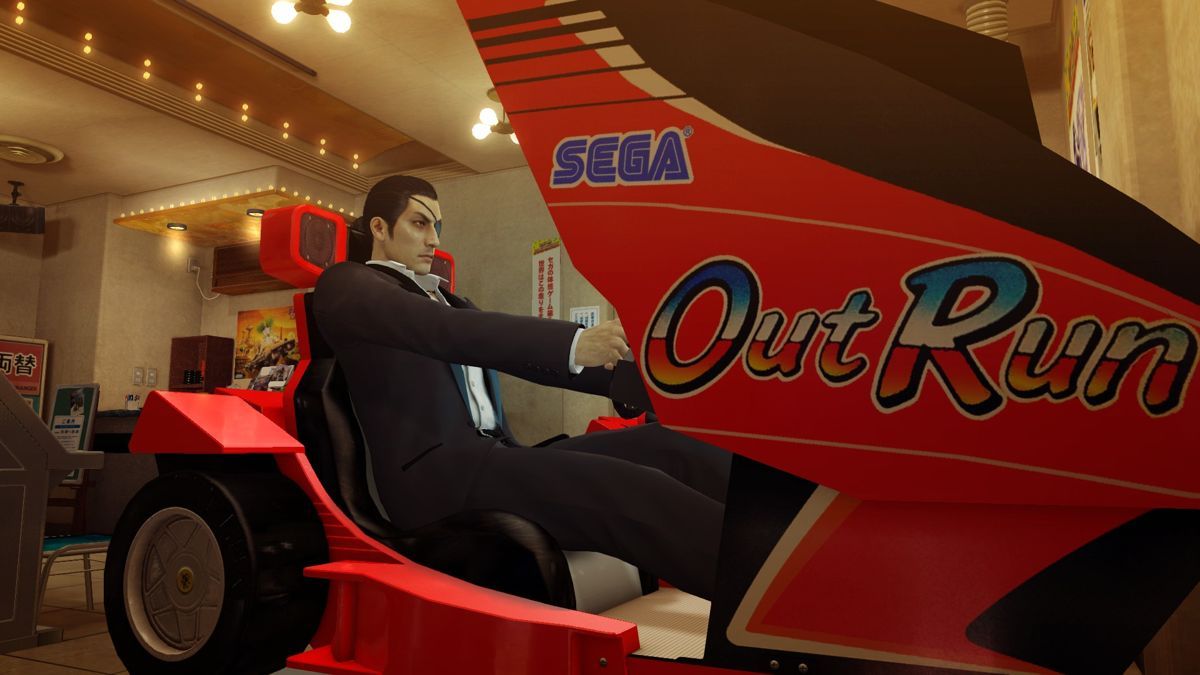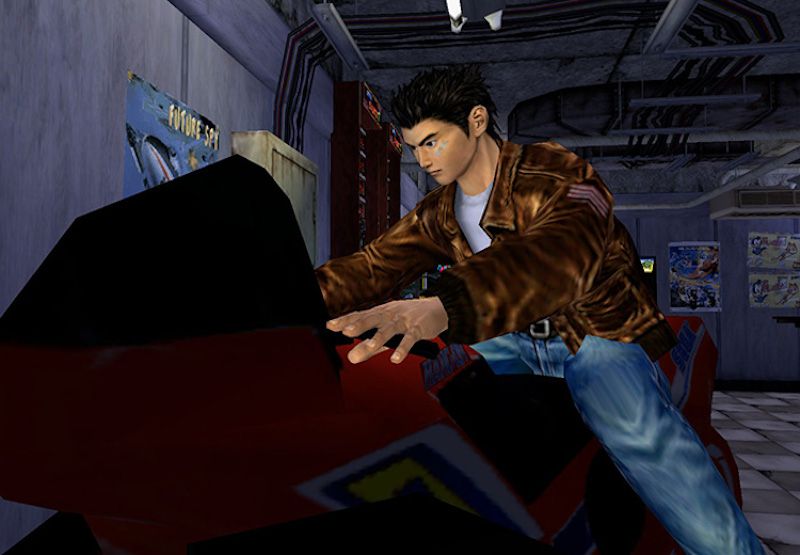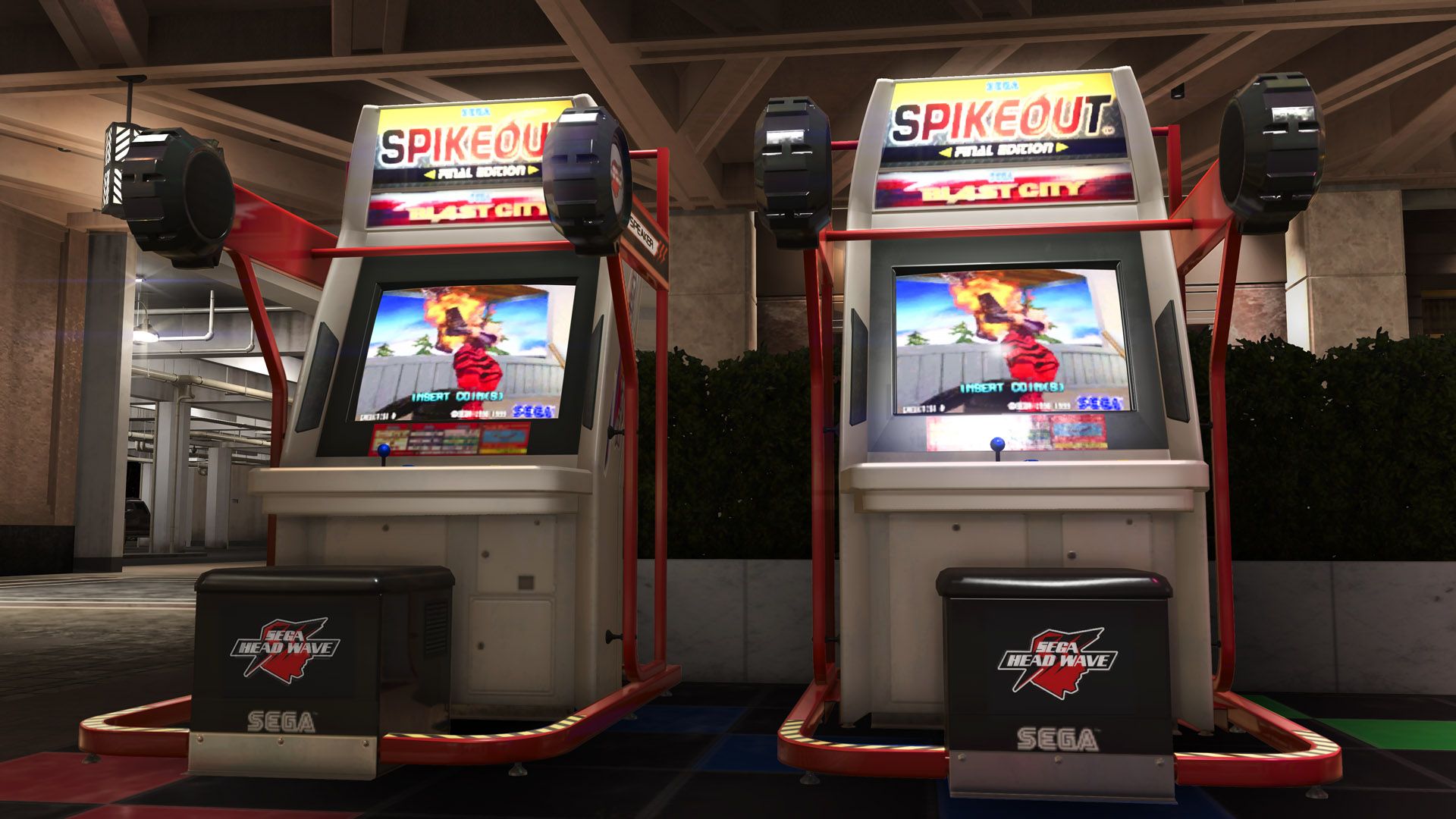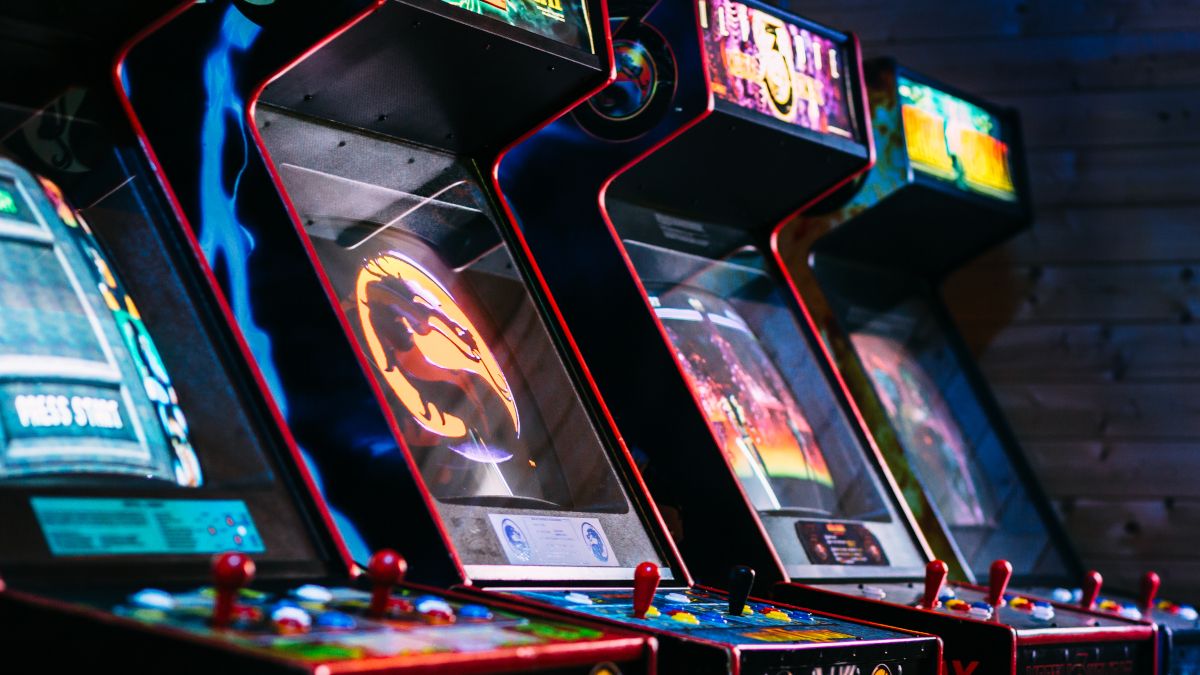Key Takeaways
- Sega’s innovative tradition of reviving forgotten arcade classics as “games within games” in series like
Shenmue
and
Like a Dragon
sets a new standard for preserving arcade history. - By including obscure arcade games within popular releases, Sega sparks interest in old franchises and introduces players to forgotten gems.
- Some of the games featured within these larger titles have never even received proper console ports.
Arcade classics like Pac-Man, Frogger, and Street Fighter II have received countless ports and enhanced editions, but lesser-known arcade games rarely get the same treatment. However, Sega has revived numerous forgotten arcade classics with an innovative new tradition.
How Like a Dragon Revisits Sega’s Arcade History
Sega’s efforts at preserving its arcade library date back to the late ’90s with the start of SEGA AGES, a series of re-releases for classic Sega games. Beginning on the Sega Saturn, AGES has seen multiple iterations across different consoles, ensuring dozens of famous Sega games remain accessible on a wide variety of platforms.
The most recent iteration of AGES is a series of standalone releases on the Nintendo Switch, which includes arcade games such as Virtua Racing and Shinobi alongside console games from the Sega Genesis and Master System. While there are plenty of retro game compilations like SEGA AGES, it stands out as one of the earliest examples of this practice and highlights Sega’s long-standing commitment to arcade preservation.
But this isn’t the only way Sega has brought its arcade classics to modern systems. In recent years, the Like a Dragon franchise (formerly known as Yakuza) has become an unexpected platform for many of Sega’s arcade classics.
For those unfamiliar with the franchise, Like a Dragon is a long-running series of open-world action games created by Sega. Early installments were 3D brawlers, but the series shifted towards turn-based role-playing games with its seventh mainline entry, Yakuza: Like a Dragon.
Although Like a Dragon has undergone numerous dramatic changes over the years, fans and critics have continuously lauded the series for its flashy combat, memorable characters, and captivating blend of gritty crime-drama and absurd humor. But the most notable part of the series is its immersive open world.
Apart from a few exceptions, most Like a Dragon games are set in the streets of modern-day Japan. Rather than placing you in a sprawling sandbox akin to other open-world games like Grand Theft Auto or Assassin’s Creed, Like a Dragon‘s open-worlds are confined city districts full of people to meet, enemies to defeat, and a slew of minigames to enjoy. These minigames vary from simple gambling games to engrossing, multi-hour diversions, but the most notable ones are retro Sega arcade games.
Since the inclusion of Virtua Fighter 2 and Taiko no Tatsujin in Yakuza 5, Sega arcade games have become a staple of the Like a Dragon series. Early attempts at bringing retro arcade releases to the franchise saw the addition of beloved games such as Space Harrier and Out Run, but later entries tapped into more obscure parts of Sega’s arcade history with games like Fighting Vipers and Sonic the Fighters.
Like a Dragon isn’t the first Sega series to feature arcade titles as playable minigames. The idea originated in 1999 with Shenmue, which allowed you to visit an arcade to play Space Harrier and Hang-On. These games returned in Shenmue II alongside Out Run and After Burner.
Like a Dragon continues Shenmue‘s legacy with broader coverage of different genres and series. Sega’s fighting games, puzzle games, and even fishing games can all be found in arcades throughout the Like a Dragon series. The inclusion of Sega arcade games has now become a popular tradition for the franchise and has introduced many series fans to the forgotten gems of the arcade era.
Reviving Arcade Classics as “Games Within Games”
The inclusion of arcade games in Shenmue and Like a Dragon was likely intended to be nothing more than a simple bonus feature, but their presence might set a new standard for the rest of the gaming industry. Sega’s decision to revive its arcade classics as games within other games presents a creative solution to one of the most important problems facing arcade re-releases.
Compared to other forms of retro gaming, arcade games aren’t as easy to market to a modern audience. They’re typically brief and simple experiences, meant to be played repeatedly and within short bursts. As such, most consumers aren’t willing to spend much on re-releases of older arcade games.
This isn’t to say that a game’s length reflects its quality, but rather that it drastically impacts how much the majority of consumers are willing to pay. Even titles sold at budget prices, such as those included in the SEGA AGES and Capcom Arcade Stadium releases, don’t always attract a large audience. The fact is that the audience for arcade games (excluding fighting games) is far smaller than other retro genres, which gives studios little incentive to port obscure arcade games to modern systems.
Sega’s practice of releasing its less popular works through major titles like Shenmue and Like a Dragon has helped preserve titles that were unlikely to ever receive a standalone release. This “games within games” approach has led to the revival of retro titles that haven’t been ported since the Dreamcast, such as Fighting Vipers 2 and Virtua Fighter 3, as well as games that never received console ports, including Daytona USA 2, SpikeOut, and Motor Raid.
This practice also helps bring attention to both forgotten arcade series and upcoming new releases. Like a Dragon has introduced players to games they likely never heard of, potentially renewing interest in some of Sega’s older properties. Likewise, since many of these games aren’t playable anywhere else (unless you own the arcade cabinets), their inclusion in Like a Dragon has sparked interest in the series among fans of Sega’s arcade releases.
It should be noted that Sega isn’t the only company to include games within other games. Some examples include Nintendo adding numerous playable NES games in the original Animal Crossing and id Software hiding the first two Doom games as unlockable rewards in Doom Eternal. Yet few studios ever take advantage of this practice to spotlight underrepresented arcade games.
For lesser-known arcade games that might never be ported to modern systems, there’s no better option than including them within larger games. Rather than letting these games become lost to time, it’s better to have them available in any capacity, whether that be as a standalone release or a bonus in another game.
By reviving lesser-known arcade games through popular releases, more companies can preserve their past works while also bringing attention to both new and old franchises. It’s proven to be a success for Sega, and can do the same for other developers with a long history of forgotten arcade games, such as Midway, Bandai Namco, and Konami. Most importantly, re-releasing obscure arcade titles as “games within games” might be the best way to prevent them from becoming lost media.
A New Standard for Arcade Re-Releases
Fortunately, between retro compilations like Atari 50 and Capcom’s recent fighting game collections, arcade games seem to be making a resurgence on modern systems. But when it comes to the obscure parts of arcade history, more companies should follow Sega’s lead and include their forgotten games in future releases.
Another way of preserving arcade games is through the “dumping” of arcade boards to file, but to experience this you’ll need some means of virtualizing the hardware like a MiSTer.







